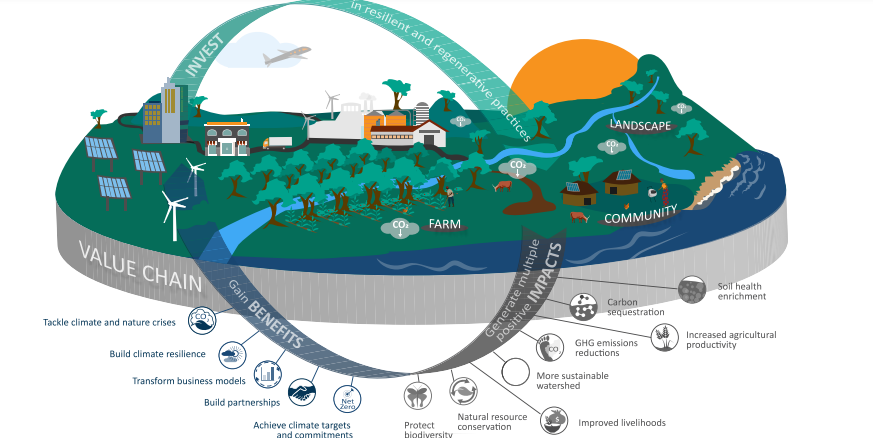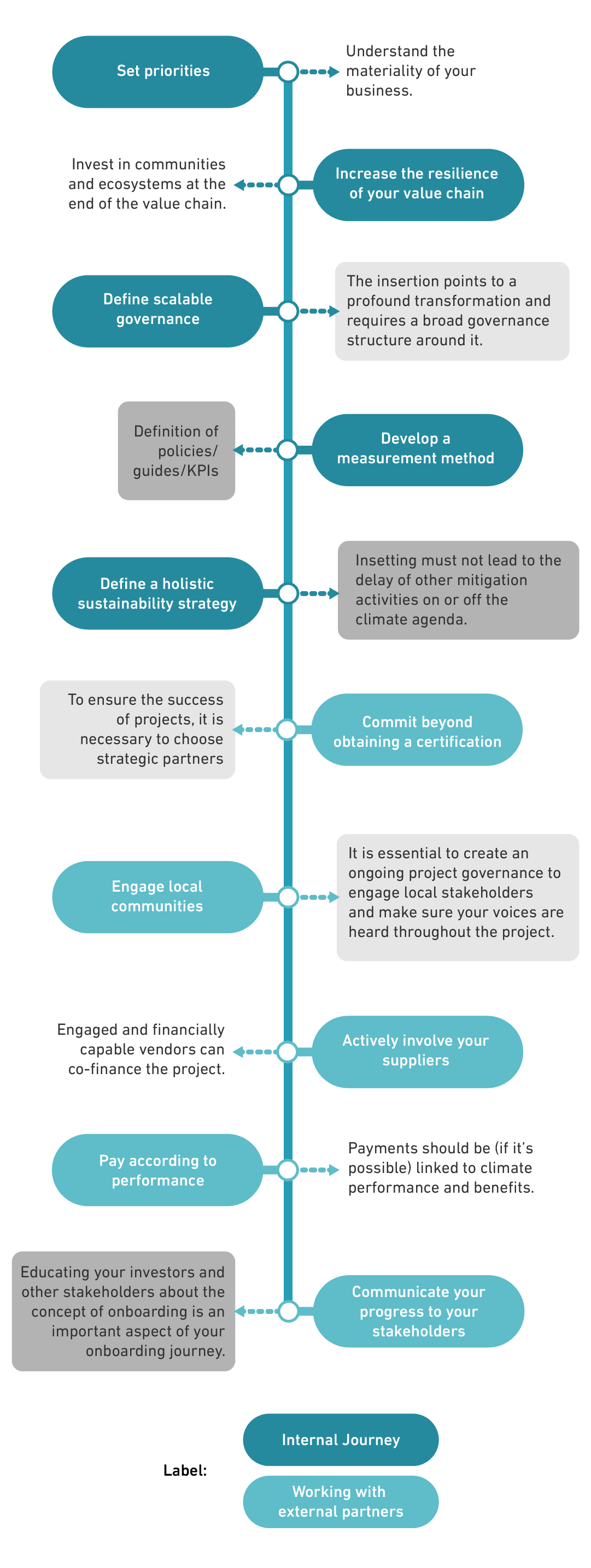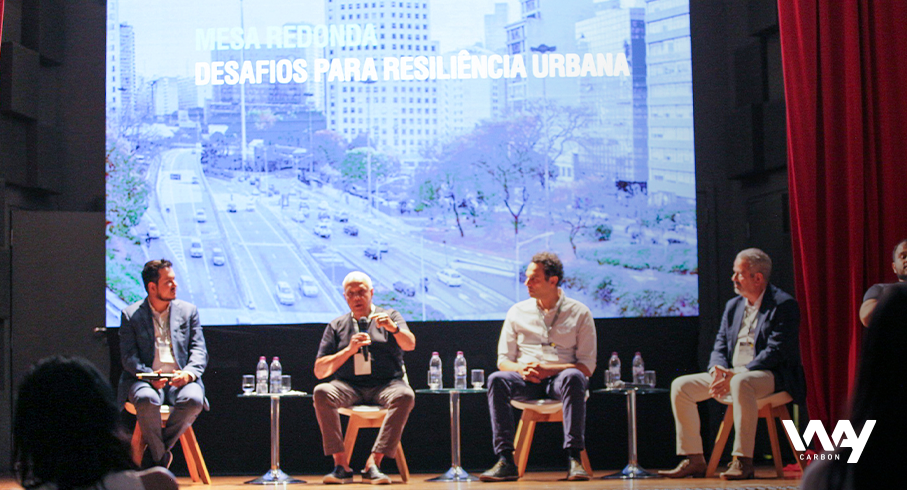Offsetting x Insetting: how to define a good strategy?
The market has observed the growing commitment of companies from the most diverse sectors in mitigating its greenhouse gas emissions, as a way of contributing to limit global warming to 1.5ºC¹. In addition to carrying out Greenhouse Gas (GHG) inventories – an important tool that organizations use to quantify the impact of their operations on climate change – companies can use other mechanisms to increase their potential for a positive impact on nature, be it contributing to the maintenance of carbon projects or linking decarbonization strategies to their operations.
The Science Based Targets Initiative (SBTi)², launched in 2015, was the first initiative that required companies committed to the climate cause to reduce emissions beyond the activities within their responsibility, in other words, including their entire value chain. As part of the initiative, the Net Zero Corporate Standard was created to set corporate targets for reducing GHG emissions in line with climate science.
The growing adhesion of companies to the Net Zero movement also increases the search for effective, scientifically based and internationally recognized solutions to fulfill their ambitious decarbonization strategies. Among these solutions, there are offsetting and insetting.
Offsetting strategy
Offsetting is the compensation of residual emissions from a company or a product through the purchase of carbon credits in markets, both regulated and voluntary, such as the Clean Development Mechanism (CDM), Verified Carbon Standard (VCS) and Gold Standard (GS).
In general, carbon credits are generated from projects developed based on pre-approved methodologies. From the definition of this methodology, a project description report is developed, which in turn is submitted for validation by a third party.
The project must be approved in a series of program’s criteria to which it will be submitted. One of these criteria is the additionality of that project must be proven, in other words, guarantee the benefit provided by this activity really has a significant differential in the environmental, economic-financial and implementation aspects, and that it is not a common practice developed in the region where the project will be implemented.
After validation, the project is monitored to prove that emissions are actually being reduced. When there is evidence, the pricing used is that one ton of greenhouse gases (or tons of carbon dioxide equivalent) is equivalent to one carbon credit.
After that, when a particular company buys this credit to compensate its emissions, it is retired on behalf of the entity.
Insetting strategy
However, as offseting can only be used to compensate residual emissions (those cannot be avoided), to achieve their Net Zero targets, companies have started to carry out emission management projects within their own value chain. (Scope 3, according to GHG Protocol).
Then comes the practice we call insetting, in which interventions are designed along the value chain as a way to reduce GHG emissions. Commonly carried out from nature-based projects, these interventions seek, in addition to reducing emissions and/or capturing GHGs, to create positive impacts for communities, landscapes and ecosystems, as illustrated in the figure below:

INTERNATIONAL PLATFORM FOR INSETTING, 2022.
Such a mechanism can be used in conjunction with offsetting to enable the transition to less carbon intensive business models, because while insetting focuses on reducing, avoiding and/or capturing scope 3 emissions, offsetting focuses on compensate emissions that cannot be avoided.
As it is a work carried out in conjunction with the supply chain and does not involve activities under the direct responsibility of the company that is in a decarbonization strategy, insetting presents some challenges (but many opportunities) in its implementation. The figure below summarizes how a company can implement an insetting strategy within its supply chain. The figure presents 10 lessons that help to
reflect and define both an internal approach, with the definition of tools, indicators and action plans, and an external approach, so its value chain engagement in the cause and the actions of GHG reduction in the atmosphere also have other associated co-benefits.

Bibliographic References
International plataform for insetting. A practical guide to insetting. (https://www.insettingplatform.com/wp-content/uploads/2022/03/IPI-Insetting-Guide.pdf)
https://www.unep.org/resources/emissions-gap-report-2021
https://blog.waycarbon.com/2022/07/o-que-e-um-projeto-de-carbono-e-quais-oportunidades-pode-gerar/
https://blog.waycarbon.com/2022/04/o-que-observar-antes-de-submeter-uma-meta-ao-sbti/











